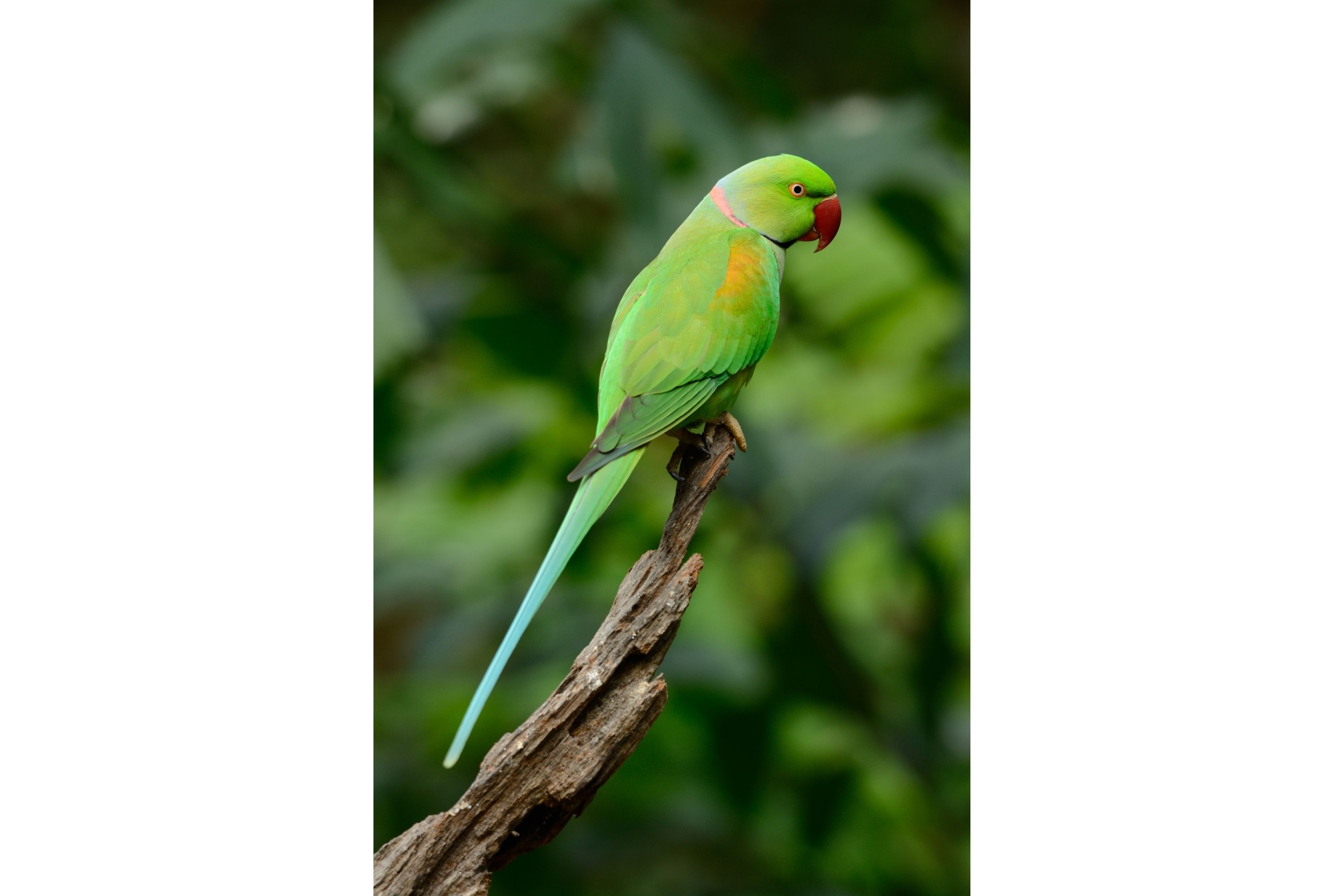Alexandrine parakeet
(Psittacula eupatria)

Description
The Alexandrine parakeet (Psittacula eupatria), also known as the Alexandrine parrot, is a medium-sized parrot in the genus Psittacula of the family Psittaculidae. It is named after Alexander the Great, who transported numerous birds from Punjab to various European and Mediterranean countries and regions, where they were prized by the royalty, nobility and warlords. The Alexandrine parakeet was first described by French zoologist Mathurin Jacques Brisson as Psittaca Ginginiana or "La Perruche de Gingi" (The Gingi's Parakeet) in 1760; after the town of Gingee in southeastern India, which was a French outpost then. The birds may, however, merely have been held in captivity there. Carl Linnaeus redescribed the Alexandrine parakeet in 1766 as Psittacus eupatria. The Alexandrine parakeet is one of the largest parakeets, measuring 56 to 62 cm (22 to 24 in) from the top of the head to the tip of the tail and weighing 200 to 300 g (7.1 to 10.6 oz). The tail measures 28 to 35 cm (11 to 14 in). It is predominantly green with a light blue-grey sheen on the cheeks and nape (back of the neck), yellow-green abdomen, red patch on the shoulders and massive red beak with yellow tips. The upper-side of the tail passes from green at the top to blue further down, and is yellow at the tip. The underside of the tail is yellow. Adults are sexually dimorphic. Adult males have a black stripe across their lower cheeks and a pink band on their nape. Adult females lack both a black cheek stripe and a pink nape band. The young are similar in appearance to adult females but have shorter tails.
Taxonomic tree:







